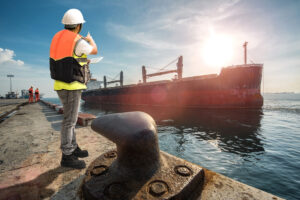In a recent article*, the International Maritime Organization (IMO) has shared some findings related to the correlation between cleaning the ship’s hull and GreenHouse Gas (GHG) emissions. The study revolved around the impact of ship’s biofouling on GHG emissions and the findings were worrying. It turned out that “a coating of slime as thin as 0.5 mm covering up to 50% of a hull surface might increase GHG emissions by 20 to 25%”, depending on ship features, speed, and other existing factors.
Before going in depth with why ship’s sludge and slime could increase GHG emissions, we need to first identify biofouling and the phenomenon of greenhouse effect.
What is Biofouling?
Biofouling is the unwelcome development of marine algae, small animals, plants and other microorganisms on a submerged structure, such as ship hulls and offshore platforms.
Biofouling is damaging to local marine communities since it transports foreign species to new environments where they can monopolize, outcompeting native species and triggering ecological and food web disruptions. Its accumulation also leads to increasing the roughness of the surface where it grows, which increases a ship’s hydrodynamic drag. The two possible outcomes are a decrease in ship speed or an augmentation in power and fuel consumption to maintain constant speed. This affects both operational costs and exhaust emissions.
What are GHG emissions, and how do they affect Earth?
Greenhouse gases such as Carbon dioxide (CO2) can have some severe environmental and health consequences. They contribute to respiratory problems due to smog and air pollution, and they affect climate change by trapping heat. Other implications of climate change produced by greenhouse gases include extreme weather, food supply shortages, and increased wildfires.
What is the solution?
The International Maritime Organization (IMO) has taken some measures to reduce the GHG emissions from the maritime industry, including “a series of legally binding ship design and operational performance indices that must be achieved by individual vessels”. Several solutions have been suggested by the IMO, and they include “using optimized biofouling control coatings and in-water cleaning technologies and ultrasonic systems.”
At All Seas Shipping, we strongly believe in our role towards helping protect our maritime environment, and we invite every shipowner and shipping agency to adopt a biofouling management strategy to help reduce the negative impact that biofouling has on our climate. As an ISO 14001 certified business, we are committed to always conducting our operations in a way that protects and preserves our environment. We also contribute to this mission by providing ship husbandry services that include general cleaning of the hull, which helps control the slime and microorganisms that grow on ships.
*Check the preliminary results of the IMO study.






